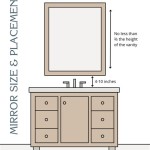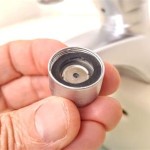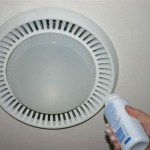Bathroom Sink Drain Stopper Replacement: A Comprehensive Guide
A malfunctioning bathroom sink drain stopper can quickly become a source of frustration. A drain that won't seal allows water to slowly drain, rendering the sink ineffective for tasks requiring water retention. Conversely, a stopper stuck in the closed position leads to an overflowing sink and potential water damage. Replacing the drain stopper is often a straightforward task that can be accomplished with basic tools and a clear understanding of the different types of stoppers and their corresponding replacement procedures.
Before embarking on a drain stopper replacement, it's crucial to understand the various types of stoppers commonly found in bathroom sinks. Each type operates on a different mechanism, and the replacement process will vary accordingly. Identifying the specific type of stopper present in the sink is the first step towards a successful replacement.
Identifying Common Types of Bathroom Sink Drain Stoppers
Several distinct types of drain stoppers are prevalent in bathroom sinks. Recognizing the specific type is essential for choosing the correct replacement and understanding the necessary installation steps. The following are some of the most common types:
Pop-Up Stoppers: Pop-up stoppers are characterized by a small, usually round, button or knob located directly on the stopper itself. This button is typically connected to a linkage mechanism behind the sink. Pressing the button opens and closes the stopper. These are probably the most common in newer installations.
Lift-Rod Stoppers: Lift-rod stoppers are controlled by a vertical rod located behind the faucet. Pulling up on the rod raises the stopper, allowing water to drain. Pushing the rod down lowers the stopper to seal the drain. The linkage mechanism connecting the rod to the stopper is a crucial component of this system.
Push-and-Seal Stoppers: Push-and-seal stoppers operate by simply pressing down on the stopper itself to seal the drain and pressing again to release it. There is no external lever or linkage involved in this type of stopper.
Twist-and-Turn Stoppers: Twist-and-turn stoppers, also known as turn-style stoppers, are operated by rotating the stopper itself. Turning the stopper in one direction seals the drain, while turning it in the opposite direction opens it. These are less common in new installations.
Flip-Top Stoppers: Flip-top stoppers, as the name suggests, have a hinged top that flips open and closed to control the drain. These are generally found in older sinks.
Once the type of stopper is identified, the necessary replacement parts can be acquired. It is recommended that the old stopper be taken to the hardware store to ensure a proper match. Some kits offer universal replacements, designed to fit a variety of sinks. However, verifying compatibility is always a good practice.
Essential Tools and Materials for Drain Stopper Replacement
Having the right tools and materials on hand before starting the replacement process is crucial for a smooth and efficient experience. The following list outlines the essential items typically needed:
New Drain Stopper Assembly: Choose a replacement stopper compatible with the identified type of drain. Ensure that the new stopper includes all necessary components, such as washers and seals.
Adjustable Wrench: An adjustable wrench is necessary for loosening and tightening the nuts that secure the drain assembly to the sink.
Basin Wrench (optional): A basin wrench is a specialized tool designed to reach nuts in tight, hard-to-reach spaces under the sink. This tool can be particularly useful for older or more complex drain assemblies.
Pliers: Pliers can be helpful for gripping and manipulating small parts during the disassembly and reassembly process.
Screwdriver (Phillips and Flathead): A screwdriver may be required to loosen or tighten screws on the linkage mechanism or other parts of the drain assembly.
Plumber's Putty or Silicone Sealant: Plumber's putty or silicone sealant is used to create a watertight seal between the drain flange and the sink. Choose a product specifically designed for plumbing applications.
Bucket or Container: A bucket or container is needed to catch any water that may spill during the removal of the old drain assembly.
Rag or Sponge: A rag or sponge is useful for cleaning up spills and wiping down surfaces.
Safety Glasses: Safety glasses are essential to protect the eyes from debris during the disassembly process.
Having all of these items readily available will streamline the replacement process and minimize potential delays or complications.
Step-by-Step Guide to Replacing a Pop-Up Drain Stopper
Since pop-up stoppers are the most common, a detailed guide to replacing these types of stoppers follows. The procedures for replacing other types of stoppers are related to these steps but may have specific differences depending on the specific mechanism involved.
Step 1: Preparation and Safety: Begin by turning off the water supply to the sink. This is typically done by closing the shut-off valves located under the sink. Place a bucket or container under the drain to catch any residual water. Put on safety glasses to protect the eyes.
Step 2: Disconnecting the Lift Rod: Locate the lift rod at the back of the faucet. Loosen the screw that connects the lift rod to the clevis, the horizontal rod that connects to the drain stopper mechanism. Remove the lift rod from the clevis.
Step 3: Disconnecting the Clevis: The clevis is connected to a pivot rod that extends from the drain assembly. Carefully detach the clevis from the pivot rod. Some clevises may have a spring clip that needs to be removed first. Note the position of the clevis and pivot rod for reassembly purposes.
Step 4: Loosening the Pivot Nut: The pivot rod is held in place by a pivot nut. Use an adjustable wrench to loosen the pivot nut. Be prepared for some water to spill out when the nut is loosened.
Step 5: Removing the Old Stopper: Once the pivot nut is loosened, the pivot rod can be pulled out. This will also allow the old drain stopper to be removed from the top of the drain.
Step 6: Removing the Drain Flange: The drain flange is the part of the drain assembly that sits inside the sink. It is typically held in place by a large nut underneath the sink. Use an adjustable wrench or basin wrench to loosen and remove this nut. Once the nut is removed, the drain flange can be pushed up and out of the sink. If the flange is stuck, gently tap it from below with a screwdriver and hammer to loosen it.
Step 7: Cleaning the Sink and Drain Opening: Thoroughly clean the sink and drain opening to remove any old plumber's putty or sealant. Use a scraper or putty knife to remove any stubborn residue. Ensure that the surface is clean and dry.
Step 8: Applying Plumber's Putty or Silicone Sealant: Roll a rope of plumber's putty and apply it to the underside of the new drain flange. Alternatively, apply a bead of silicone sealant to the same area. This will create a watertight seal between the flange and the sink.
Step 9: Installing the New Drain Flange: Insert the new drain flange into the sink opening. Press down firmly to ensure that the putty or sealant makes good contact with the sink.
Step 10: Securing the Drain Flange: From underneath the sink, install the rubber washer, cardboard washer, and the large retaining nut onto the drain flange. Tighten the nut securely with an adjustable wrench or basin wrench. Be careful not to overtighten, as this could crack the sink.
Step 11: Installing the New Stopper and Pivot Rod: Insert the new drain stopper into the drain opening. Make sure that the stopper is oriented correctly, with the hole for the pivot rod facing the back of the sink. Insert the pivot rod through the drain assembly and into the hole in the stopper. Tighten the pivot nut to secure the pivot rod.
Step 12: Reconnecting the Clevis and Lift Rod: Reconnect the clevis to the pivot rod. Adjust the position of the clevis so that the stopper opens and closes properly when the lift rod is moved. Reconnect the lift rod to the clevis and tighten the screw.
Step 13: Testing for Leaks: Turn on the water supply to the sink and check for leaks around the drain flange and pivot nut. If any leaks are detected, tighten the connections further or reapply plumber's putty or silicone sealant as needed.
This detailed guide provides a comprehensive overview of the pop-up drain stopper replacement process. While specific steps may vary slightly depending on the make and model of the sink and drain assembly, the general principles remain the same.
Replacing other kinds of stoppers, such as the push-and-seal or twist-and-turn types, often require less disassembly of plumbing beneath the sink. The replacement primarily focuses on removing the old stopper from the top of the drain and installing the new one. However, the preceding steps covering preparation, safety, cleaning, and leak testing still apply.
Install A Drain Stopper So The Is Removable

Universal Washbasin Water Head Leaking Stopper Bathroom Sink Drain Strainer For And Bathtub Replacement Parts Silver Com

Bathroom Sink Popup And Stopper Problems

Pop Up Lift Turn Pull Out Stopper Bathroom Sink Drains

Fixing Tricky Pop Up Drain Sink Stopper Mechanisms Efficient Plumber

Quick Tip 26 Pop Up Stopper Sticks Misterfix It Com

How To Replace A Pop Up Sink Drain Remove The Old Bathroom Stopper Repair

How To Replace Bathroom Sink Stopper Avg Cost 25 65 1 2hrs

How To Replace A Sink Stopper Quick And Simple Home Repair

Yasinu Bathroom Pop Up Drain Assembly Vessel Sink Stopper With Overflow In Matte Black Ynb007a02mb The Home Depot
Related Posts







